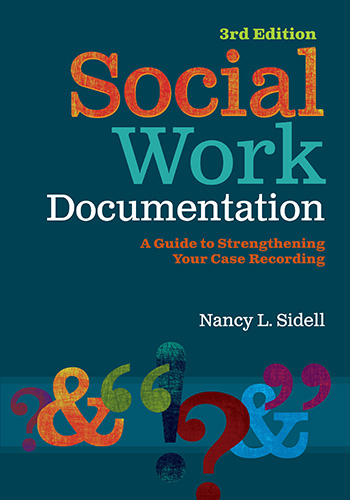
Documenting services is a requirement in virtually all social work settings, says Nancy L. Sidell, PhD, professor emeritus of social work at Mansfield University in Mansfield, Pa.
“Despite this, social workers often respond negatively to documentation and delay its completion,” Sidell says. “Learning how to efficiently and effectively document is critical, so that social workers may focus on their true passion: working with clients.”
Social workers often are ill-prepared because of limited teaching tools available, a lack of focus on documentation in their educational programs, and a general belief that these skills are not important, she says.
Sidell’s third edition of the NASW Press book, “Social Work Documentation: A Guide to Strengthening Your Case Recording,” helps fill those gaps. In this update of a best-selling title, there is an emphasis on person-first and bias-free language selection, she says.
“Examples and exercises help ensure that appropriate wording choices are used related to age, disability, immigration and socioeconomic status, and gender and sexual orientation,” she notes. “Practical advice on current practice issues such as electronic case recording, trauma-informed documentation, and documenting client cultural differences are also new to this edition.”
This how-to guide is designed to help social work practitioners build writing skills in a variety of settings, Sidell adds. The text contains more than 120 exercises. Designed to elicit written answers, the exercises can be completed individually or with a colleague, supervisor or fellow student. Peer learners can work through the exercises and provide one another with helpful feedback.